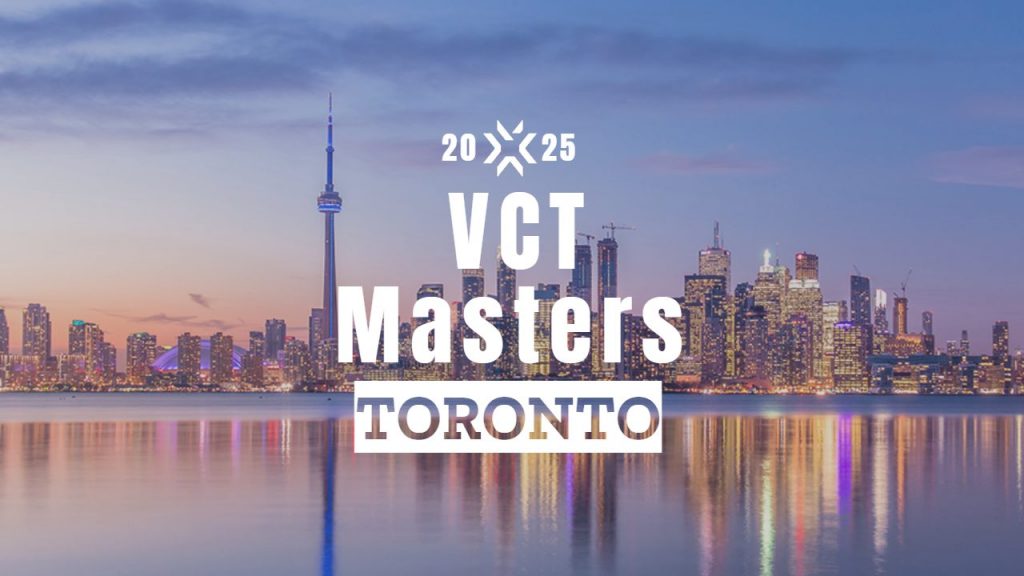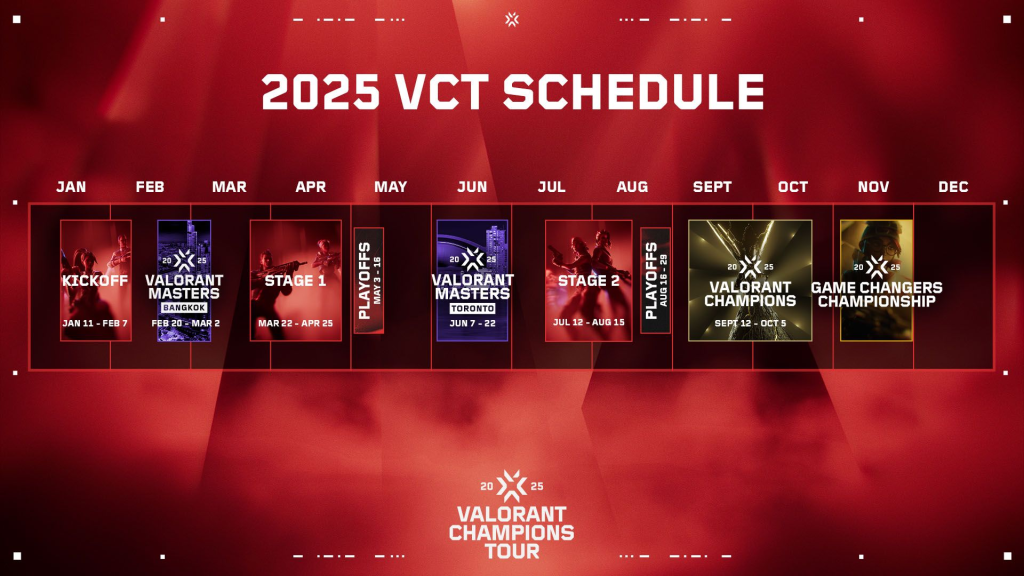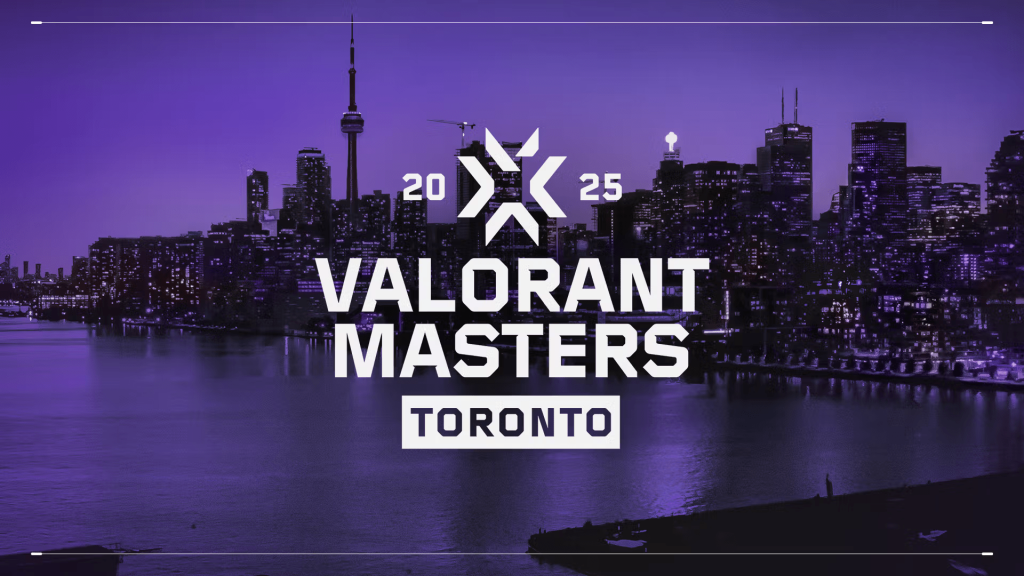
VCT Masters Toronto is more than just another landmark on the international circuit for North American Valorant fans. It serves as a soul searching opportunity. After several years of enduring watching Koreans, Europeans, and Brazilians dominate the competitive scene, NA teams have sadly been placed on the sidelines as ‘underdogs’. With the Ontario Rogers Centre filled to the brim and ready to explode for the home-team juggernauts, Toronto Masters is that rare moment where NA Org’s can rebuild and recapture their lost glory. As their local champions get ready to battle the global elite, they ponder their opportunity as well as the burden of expectation, and this time deliver on the promise of redemption.
The Stakes of Hosting Masters in Toronto

Masters in Toronto symbolizes something deep. Despite North America producing some notable domestic leagues and a plethora of franchises, very few North American teams succeed on the international stage. The national Stage Horror stories of group stage upsets, cruel best-of-three eliminations, and complete bracket implosions are still etched in the minds of the community. Here in Toronto, every single round will be immersed in the roar of NA Valorant supporters. This overwhelming zeal has the power to boost a team’s self-belief or shatter them with the weight of their own mistakes. The intensity could not get any greater; the region’s spending on grassroots talent, coaching infrastructure, and franchised leagues would be validated if the performance here was strong; if not the region would further deepen the belief that NA Valorant struggles against international competition.
NA Contenders and How They Have Been Progressing
Three of the NA squads come to Toronto as lower placement underdogs. The first, one of the former Masters finalists, has built around a core of veterans and a rookie who uses dynamic duelist plays that catch everyone’s attention. They returned to the international scene after regionally dominating qualifiers alongside back to back playoff runs in the North American League. Their strength is unmatched control of the map and a very calm in-game leader who has withstood numerous high-stake scenarios and rallies. The second contender surprise the Challengers finals winning with a very aggressive and slim roster that focused on executing fast pace and precision utility usage. Their unconventional uses of agents keeps the other team on their toes, and their synergy on Split and Bind has proven to be very effective. Finally their third squad long critized for lack of constant performance underwent a midseason change by adding a coach-turned-player whose strategies have reformed the post-plant setups. This team sets their eyes on gaining economic dominance and then snowballing various leads which makes them very focuses under the spotlight in Toronto.
Every team has battled online and at LAN events, yet none has managed to win at an international Masters. The route includes amazing wins versus elite teams and crushing defeats that highlight mental fortitude (or lack thereof). In Toronto, competitors known to the NA representatives will reappear alongside highly ranked international contenders who are equally fierce in their pursuit of the title. To win, NA representatives must learn from previous missteps, refine mid-round changes, control their temper in crucial moments, and use a wider selection of Agents to not fall behind the meta.
Meta Flexibility and Sophisticated Strategies
Towards the end of the VCT season, there’s usually a patch cycle shift. This shift favors the teams that can pivot quickly from their slow, methodical execution to agile work towards the primary goal of the competition. North American teams appear to have taken up this challenge differently. The former finalist has thrown a lot of resources at inter-regional scrims, testing customized control and sentinel heavy initiator compositions, which forced scrappy engagements. With a focus on Icebox and Ascent, they strategically picked the maps with strong smokes and site smokes which support deep control and chaotic engagements. On the other hand, the Challenger champions prefer extremely aggressive duel-domain compositions, spinning around and jumping into crossfire before defenders can setup. The hybrid approach they deployed on Fracture demonstrates how pull the eyes out of the head approach can devastate slower opponents.
The third roster with its undersized sleeper pick has reinforced post-plant defense. Their setups on Haven and Breeze emphasize utility stack to not only delay defuses but also guide slasher-class heroes to kill boxes, which aligns with tactical target—kill zone. This approach mitigates the chronic issue of early-round aggression for the rest of the class—punishes overcommitting before economy is remotely stabilized. Master’s International will have all 3 NA teams relevant to watch, especially the off-meta resurgence of KAY/O and Fade, arguably the most team-oriented agents in the game—and adapt their drafts before region-locks close for other competitions. For Toronto, success relies on understanding opponent’s control patterns and, quite literally in the group stage best-of-one format followed by best-of-three playoffs, apply pre-planned counterstrategy windows.
Tapping Into Crowd Power And Mental Toughness
Psychological aspects of crowd and venue effect should not be overlooked. Prior to the games, NA teams have had simulated audience noise integrated into their practice environments, training shot-callers to be heard over the sounds of 20,000 cheering fans in the stadium. Sports psychologists have guided players through grounding techniques—breathwork, script focus, replay reset, and even mini free goggle resets—strategic mental silence intended to block out the noise in the waiting room before the world arena erupts. Self-talk and its resultant effects is critical, as seasoned players underline: constructive self-talk is crucial, meaning round by round focus without reliving past amplified mistakes because of the audience.
Strategic understanding can be gained from packed arenas: robust cheering after successful defensive rounds can indicate which maps or rounds are NA team faves and when momentum needs to be forced vs reset. On the contrary, negative stimuli like moans after an eco round loss lead to irrational decision making and maintainable emotional control. The teams that maintain the most flexible structure will best utilize the crowd’s conducive response to make clutch plays, enabling them to swerve the crowd and turn them into a fifth defender or cohesive unit executing preplanned strategies to retake classic synchronized executes.
Mapping Out the Path To Redemption

At VCT Masters Toronto, the North American teams find themselves at a turning point. A deep run, such as the semifinals, would be incredibly beneficial for NA, electrifying local fans and bolstering NA’s position as one of the global contenders. It would justify their region’s franchised system while encouraging a new wave of players to aspire for international success. Even defeating a single top-tier European or Korean team would resonate throughout the community and serve as hope that the talent from these regions is indeed able to stand toe to toe with their competitors.
NA teams now have the path filled with obstructions. These include group-stage tiebreakers, high-paced elimination matches, critical live audience feedback, and many more. In order to achieve redemption in Toronto, these teams need to execute their strategies flawlessly, adapt to changes mid-game, and most importantly, keep a calm and confident state of mind. When the Rogers Centre’s curtain falls and the last spike is defused, only one question will remain. Will North America seizing the opportunity or will the masters trophy go to faraway lands? Whichever the answer tems out to be, will in the end dictate the region’s Valorant legacy for the upcoming seasons.
Leave a Reply